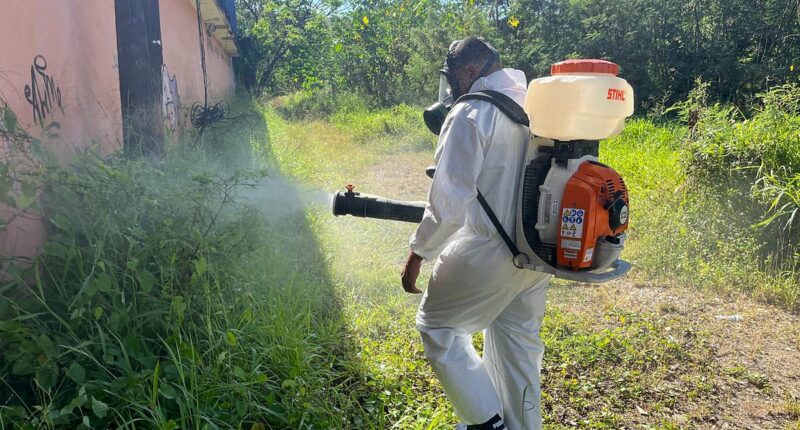Share this @internewscast.com
Hawaii has reported a dozen cases of ‘bone-breaking’ dengue fever, prompting urgent warnings from health officials.
The Hawaii Department of Health has verified a dengue fever case on Oahu, where a resident caught the virus during a foreign trip.
The health department hasn’t specified the exact location of travel, but indicated it was to a dengue-prone area like Southeast Asia, South America, the Caribbean, or Africa.
This brings the state’s total for 2025 to 12, which is already approaching the total of 16 reported in the entirety of last year.
In 2025, the CDC has recorded 2,725 dengue cases across 46 states and territories, with the majority being locally acquired in the United States. Dengue prevails in six states, and local cases have been noted in Florida, Texas, Hawaii, Arizona, and California.
While cases have been on the rise in years past, figures are slowing after a dengue outbreak last year resulted in a record-high 8,000 infections.
This illness, transmitted through bites from infected mosquitoes, is often called ‘break-bone fever’ due to the severe joint and muscle pain that feels as if bones are breaking.
And about one in 20 people with symptoms suffer bleeding, gasping for air and shock.

Hawaii has recorded 12 dengue cases this year, all associated with the Aedes aegypti mosquito, also known as the yellow fever mosquito.

A worker fumigates against mosquitoes around a building after a spike in dengue fever cases in Penuelas, Puerto Rico last year
Every identified case in Hawaii has involved individuals traveling to areas where dengue is prevalent. Consequently, the agency advises travelers returning from such regions to consult a doctor if they show symptoms within two weeks.
Mosquitoes carrying the dengue virus are usually found in tropical and subtropical regions like Central and South America, Africa, South Asia and the Pacific Islands.
In the US, dengue is most prevalent in Florida, Texas and California, as well as the territory Puerto Rico.
According to CDC data, Puerto Rico has reported the most dengue cases at 2,152 so far this year. Florida has seen 115 cases while California has seen 62.
The disease spreads through mosquito bites and cannot be transmitted from person to person.
Roughly 400million people get dengue fever every year but eight in 10 don’t develop any symptoms.
Those who do usually experience a high fever, blotchy rash, muscle aches, joint pain and pain behind the eyes.
But in rare and severe cases, the condition can cause vomiting or throwing up blood, intense joint pain and trouble breathing. These issues may further cause internal bleeding, leading to death.
Thirteen percent of patients die from the disease if they do not receive treatment.

Dengue is a potentially deadly virus passed to people by infected mosquitoes and was historically known as ‘break-bone fever’

Emma Cox, 27, is one of those to report suffering from dengue fever. She had traveled to Indonesia, but 10 days after returning to the UK, she developed symptoms

There is no antiviral for dengue fever, but the World Health Organization says that by rapidly replacing lost fluids the mortality rate drops to less than one percent.
A vaccine for dengue is available and approved by the FDA for children aged nine to 16 years old, but its manufacturer, French pharma giant Sanofi Pasteur, has discontinued production globally, citing a lack of demand.
Doses are available in Puerto Rico, but these are expected to run out by 2026.
Dengue cases have surged in Latin America, thought to be linked to the El Nino weather cycle at that time – which brings more heavy rains to areas of the continent – leading to more standing water in which mosquitoes can multiply.
At the same time, rising temperatures have allowed mosquitoes to be active for longer each year and advance further north.
In areas of the world where outbreaks are not as common, upticks are being linked in part to travel, leading to people who become infected abroad to enter the US then get bitten by a mosquito, which passes the virus to the insect and allows it to take root in the local mosquito population.
The CDC urges Americans traveling to high-risk areas to carry insect repellent, wear long sleeves and long pants outside and sleep in air-conditioned rooms or those with window screens to prevent being bitten.
















